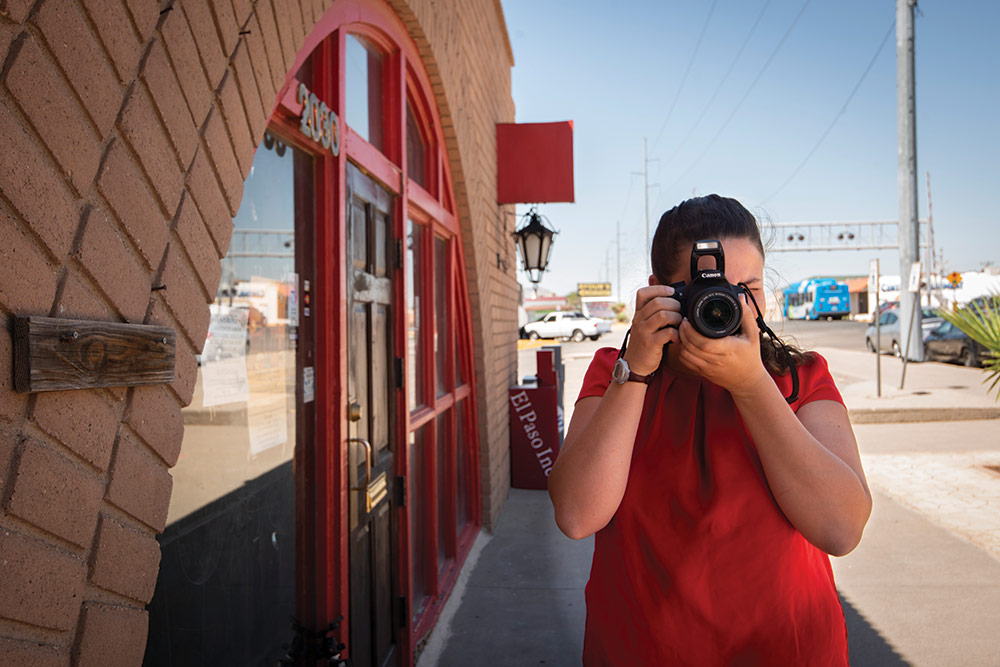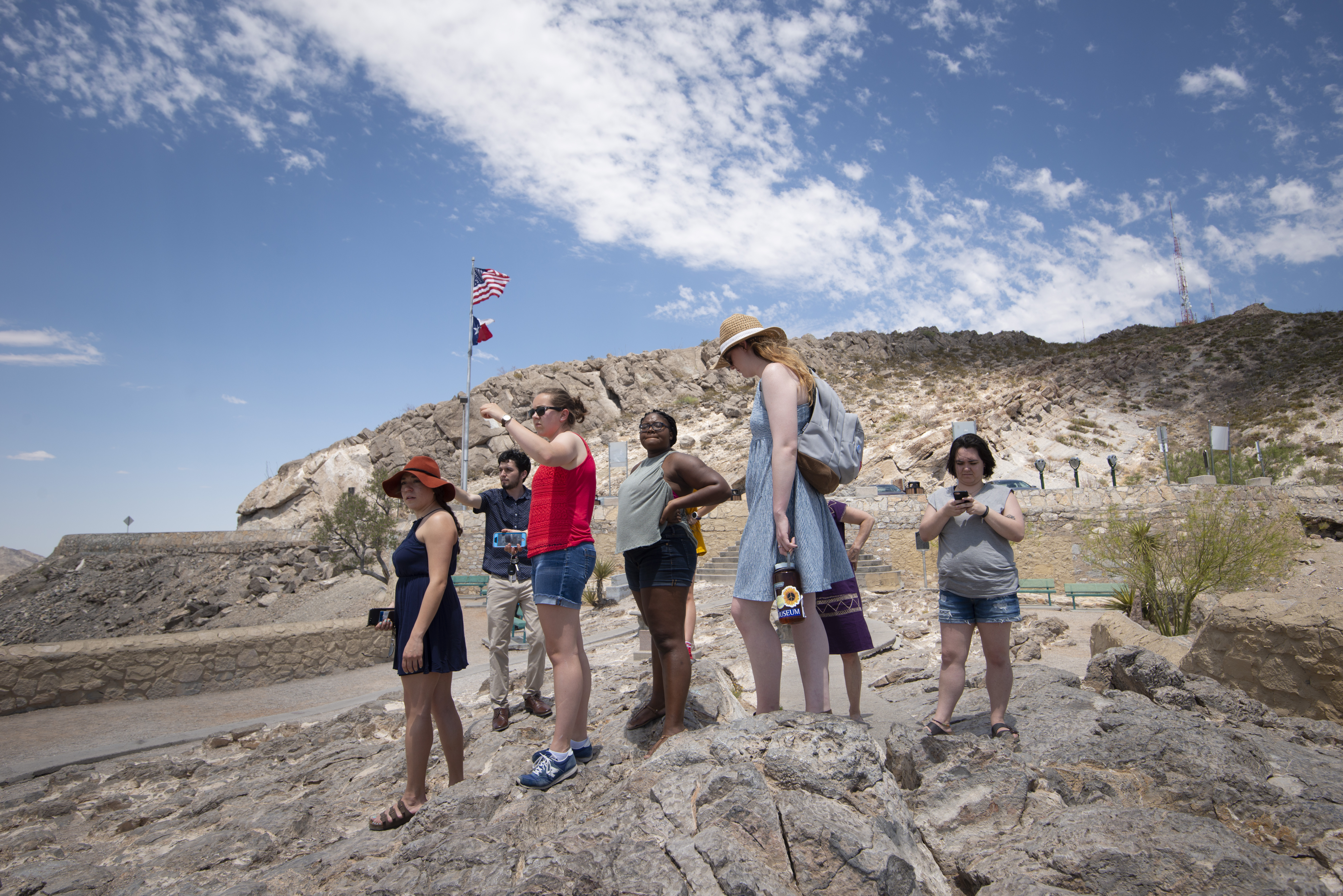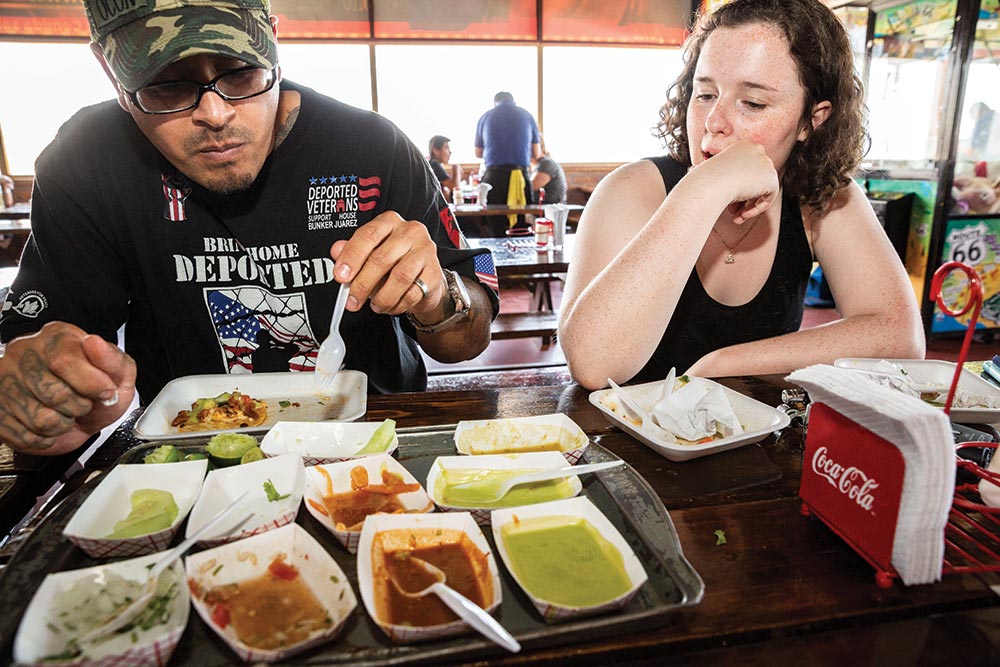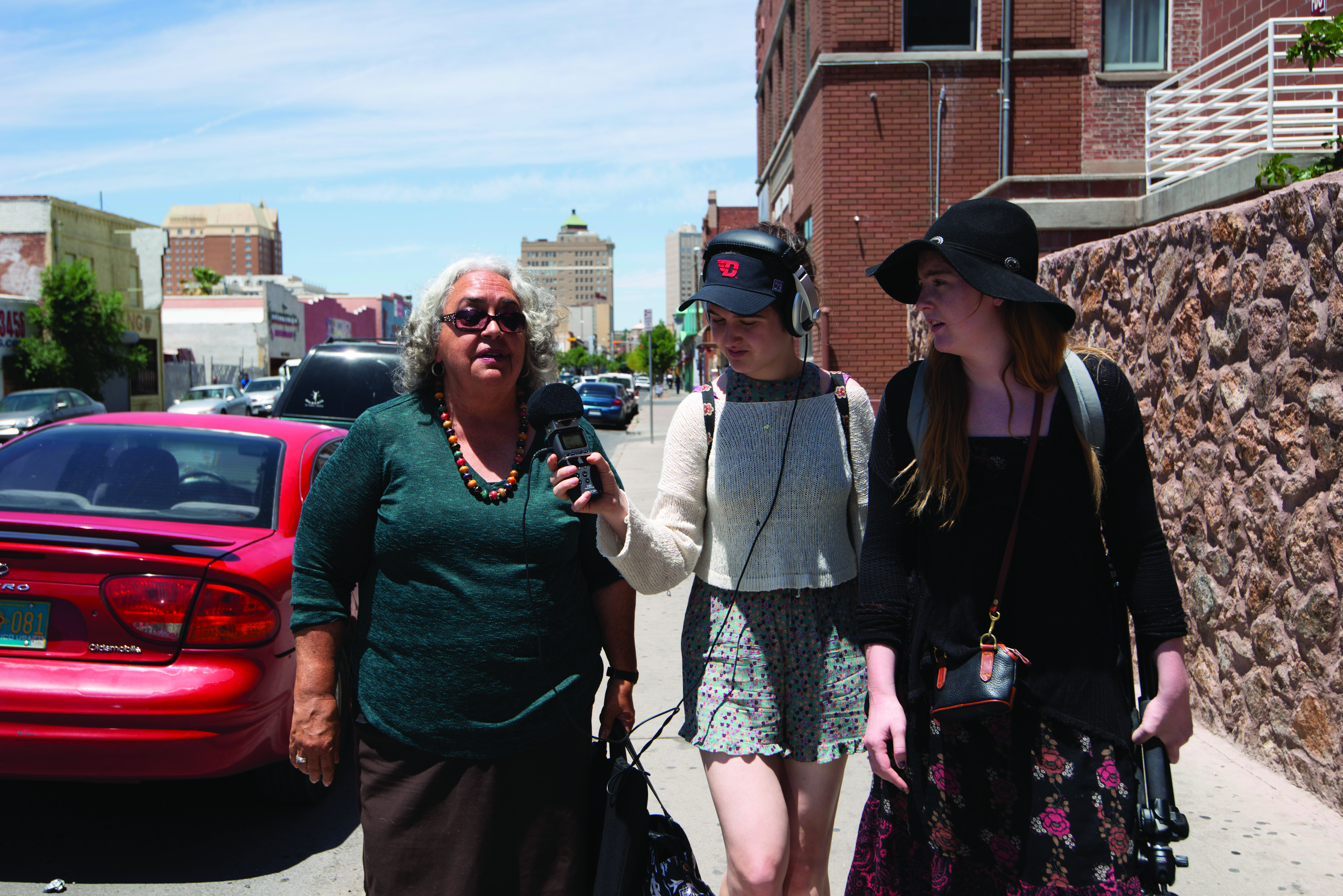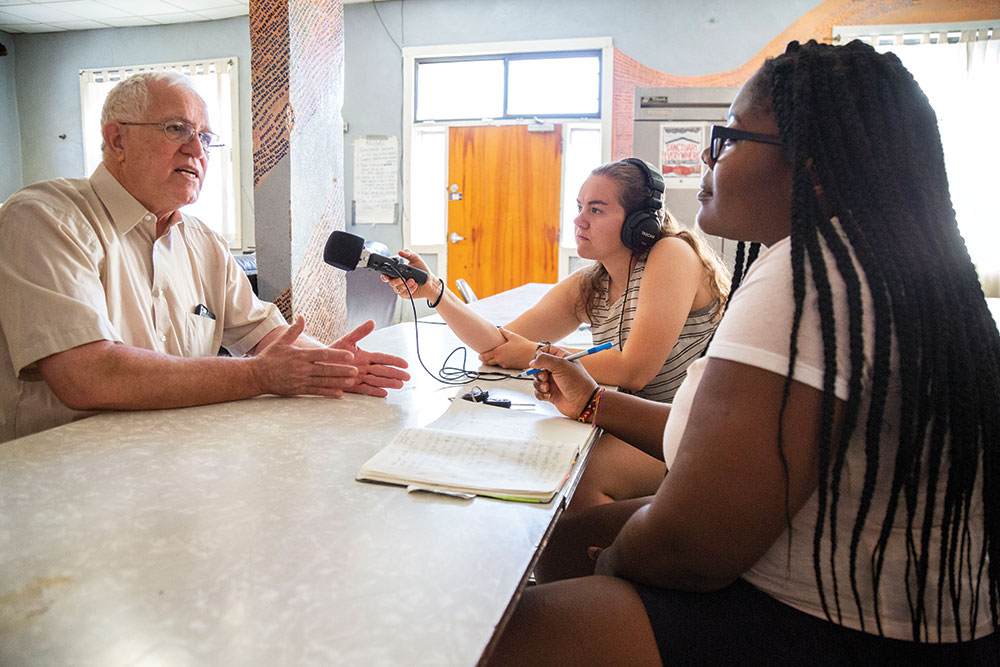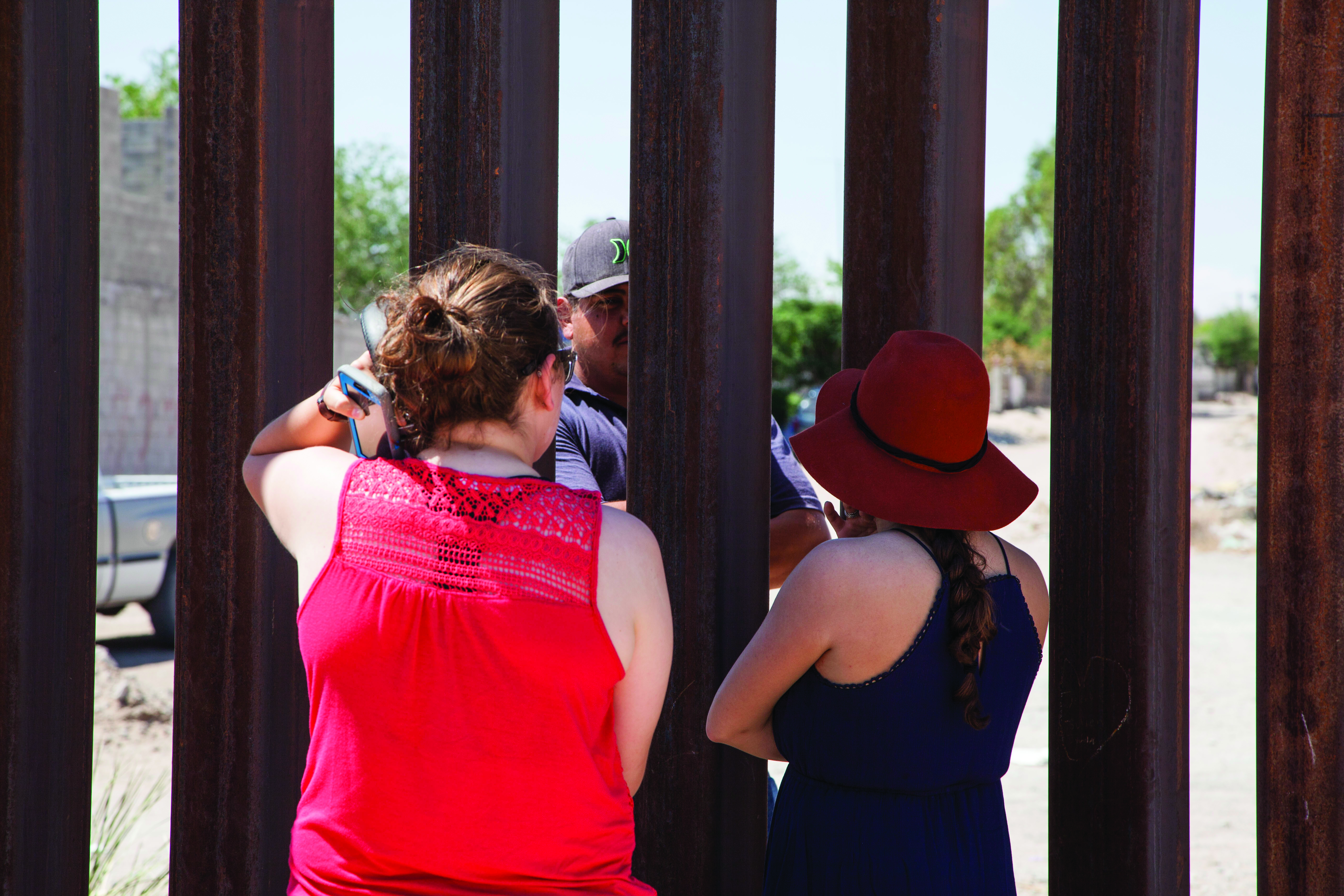Each belonging to the other
Our Lady of Guadalupe hangs in portraits over the cities of El Paso, Texas, and Ciudad Juárez, Chihuahua, Mexico, her gaze resting on the Mexican and on the American without discrimination. From her post in their churches, businesses, street murals, thrift shops and homes, Our Lady of Guadalupe serves as the shared mother of these sister cities, each belonging to the other. Notions of border and nation try to separate them, but the cities cling to one another as people move between them — fluid like the river that forms much of the U.S. and Mexican border. Pigeons fly from one side to another while desert sand blows between the posts of the border wall.
I visited both cities last May with the University of Dayton’s Moral Courage Project, a multimedia human rights storytelling project coordinated by UD’s Human Rights Center and the human rights studies program, in conjunction with Proof: Media for Social Justice. This project documented the experience of the border in an attempt to disrupt the current narratives around immigration and humanize the issues. For two weeks, our team of students and professors met with the people who call these cities home, and they shared with us their stories of tragedy, courage, sorrow, love, resistance and hope. While we were there, media discourse shared other versions of the story of immigration, often with language about gang members and animals and the wall needed to keep them out.
Beneath the shadow of a wall that stands at the border, I encountered much different animals. They were two abandoned stuffed animals — one on the Mexican side, one on the American — sunk in the sand with stuffing bleeding from tattered seams. I thought not about gang members but about the children I know who cling to their toys for comfort. I wondered if the children who once clutched these bears now have trouble sleeping without them.
In the storage room of a parish office in El Paso, under the gaze of two statues of the Blessed Mother, we sat with an undocumented mother. She shared with us the loneliness of immigrating, the pain of watching the impermeability of the border dissolve her marriage, and the hope she has that her children will have enough opportunities in America to make that pain worth it. I struggled to understand some of her Spanish, but I didn’t need a translation to feel the way her voice trembled under the weight of the love it carried for her family. At the end of the interview, shaking her hand felt familiar. I had long ago memorized a mother’s grip — soft and capable — in the hands of my own mother, my grandmother, my aunts.
On the walls of the home of a deported Vietnam veteran in Juárez, under a picture of Our Lady of Guadalupe and between the Mexican and American flags, hangs a painted portrait of the granddaughter he hasn’t been allowed to meet. The U.S. government tells him who he can and cannot hold, so instead he cradles a paintbrush and calls his beloved onto canvas. A border wall separates him from his family, but on the walls of his home he hangs their faces and holds them in his gaze. The other exiled U.S. veterans describe him as their grandfather. When he laughs with them, his eyes crinkle in the same places my grandfather’s used to when he sat around a dining room table with those he loved.
During our two weeks, we learned from people in their living rooms and favorite diners, walked with them through their neighborhoods, interviewed them in their offices, and photographed them living and leading lives that embody moral courage. We asked what they wanted the rest of the world to know about them. One response was universal: Immigrants and those who live within the borderlands are people just as human as anyone else. When we asked what keeps them hopeful, they told us about their relationships — the reprieve that comes through the ability to be together, the act of discovering family within unexpected people and places, the possibility of one day holding a loved one again, and the strength they find within the promises of each other. Controlled by a political system designed to separate, isolate and dehumanize, the offspring of the sister cities resist and rebel under the gaze of a common mother by loving, holding and being of and for each other.
In only its second iteration, UD’s Moral Courage Project is still in the process of learning, shifting and growing. As a team of members with different backgrounds, skill sets and beliefs, we struggle with the urgency of producing a story that can move its audience in the same way our experience at the border continues to move us. The course is rooted in a shared experience and our disagreement functions as momentum instead of conflict. Our work this semester to produce our exhibit — which includes a physical presentation, podcast, website and zine — stems from a place of love. The exhibit, America the Borderland, seeks to highlight and share the love motivating our friends at the border to take risks on behalf of their own communities. The Moral Courage Project has taught me that human rights work is more about leaning into a love that complicates our perspective rather than depending on answers to resolve our questions.
The Blessed Mother hangs in portraits over the University of Dayton just as Our Lady of Guadalupe hangs over the borderlands. Through our Marianist identity, we have claimed Mary as our mother, but more than that, we have claimed all those who fall under her gaze as our sisters and brothers. To truly be the University for the common good, I believe we must mobilize the love that defines our identity as a community, not as a border which defines the edges of our community but as a bridge that extends it. When we choose hope and love as means of resistance, we learn that there are no boundaries that separate us, no walls which we cannot peer over, and no borders around the ways we belong to each other.
A version of this essay first appeared in Flyer News. Mary McLoughlin, opinions editor for Flyer News, is from Williston Park, New York.
Photos by Annie Denten, Maura Parker, Glenna Jennings
